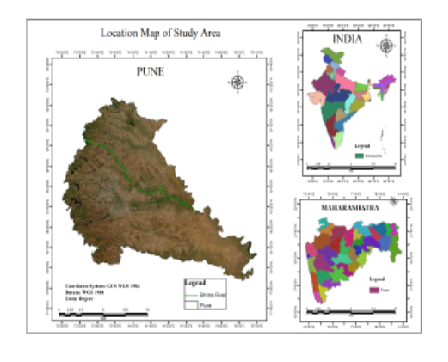


Indian Journal of Science and Technology
DOI: 10.17485/IJST/v15i39.1056
Year: 2022, Volume: 15, Issue: 39, Pages: 2027-2036
Original Article
Mrs Shweta Patil1, A R Kambekar2*
1Research Scholar, BVB’s Sardar Patel College of Engineering Mumbai, Maharashtra, India
2Associate Professor, BVB’s Sardar Patel College of Engineering Mumbai, Maharashtra, India
*Corresponding Author
Email: [email protected]
Received Date:16 May 2022, Accepted Date:19 September 2022, Published Date:17 October 2022
Objectives- A flood is a strangely high stage in a river generally, the level at which the river overflows its banks inundates the adjacent area. Flood occurs due to intense rainfall, dense population, industrialization, illegal settlement along riverbanks, bank erosion, high tide, and urbanization, and it causes harmful damage to human beings and properties. It can be taken care of by adopting flood risk measures. One of the measures is the development of flood inundation maps. Hence in the current study, flood inundation maps are developed with the integration of GIS and HEC-RAS along the Bhīma River reach in Maharashtra, India. Methods: In this study, using the series of annual peak discharges, flood flows were estimated for different recurrence intervals. Inundated areas marked along the Bhīma River represent peak flows of 25 years and 100 years return periods using HEC-RAS, ArcGIS handling of spatial data, and HEC-GEORAS for the interfacing between HEC-RAS and ArcGIS. Simulation for 2, 5, 10, 25, 50, and 100-year return periods is done, and inundation maps have been developed for the 100-years reoccurrence interval. Findings:The analysis on the left and right banks has been done using water surface elevations generated from the HEC-RAS model. The significant findings revealed that the left bank representing the east side of the river is more vulnerable to water spills than the right bank representing the west side of the river. The flooded areas along the Bhīma River are 32.4 km2 and 43.82 km2 for 25-year and 100-year reoccurrence intervals, respectively. Generally, this study revealed that urban and agricultural areas downstream of river reach are more susceptible to flooding. Novelty: The developed inundation map will help the local authority in effective decision-making and disaster management in flooding situations, especially on the left bank side of Bhīma River. Obtained water surface elevations and flood inundation depths can help to decide the necessity of structural measures that can reduce the deteriorating effects of flooding
Keywords: Inundation map; flood frequency; DEM; Sensitivity analysis; Return Period; HEC-RAS
© 2022 Patil & Kambekar. This is an open-access article distributed under the terms of the Creative Commons Attribution License, which permits unrestricted use, distribution, and reproduction in any medium, provided the original author and source are credited. Published By Indian Society for Education and Environment (iSee)
Subscribe now for latest articles and news.